This post may contain affiliate links. Please read my privacy policy.
The best Vietnamese spring rolls (Cha Gio) recipe. These crispy fried Vietnamese rolls are crispy with ground pork filling and served with a dipping sauce.
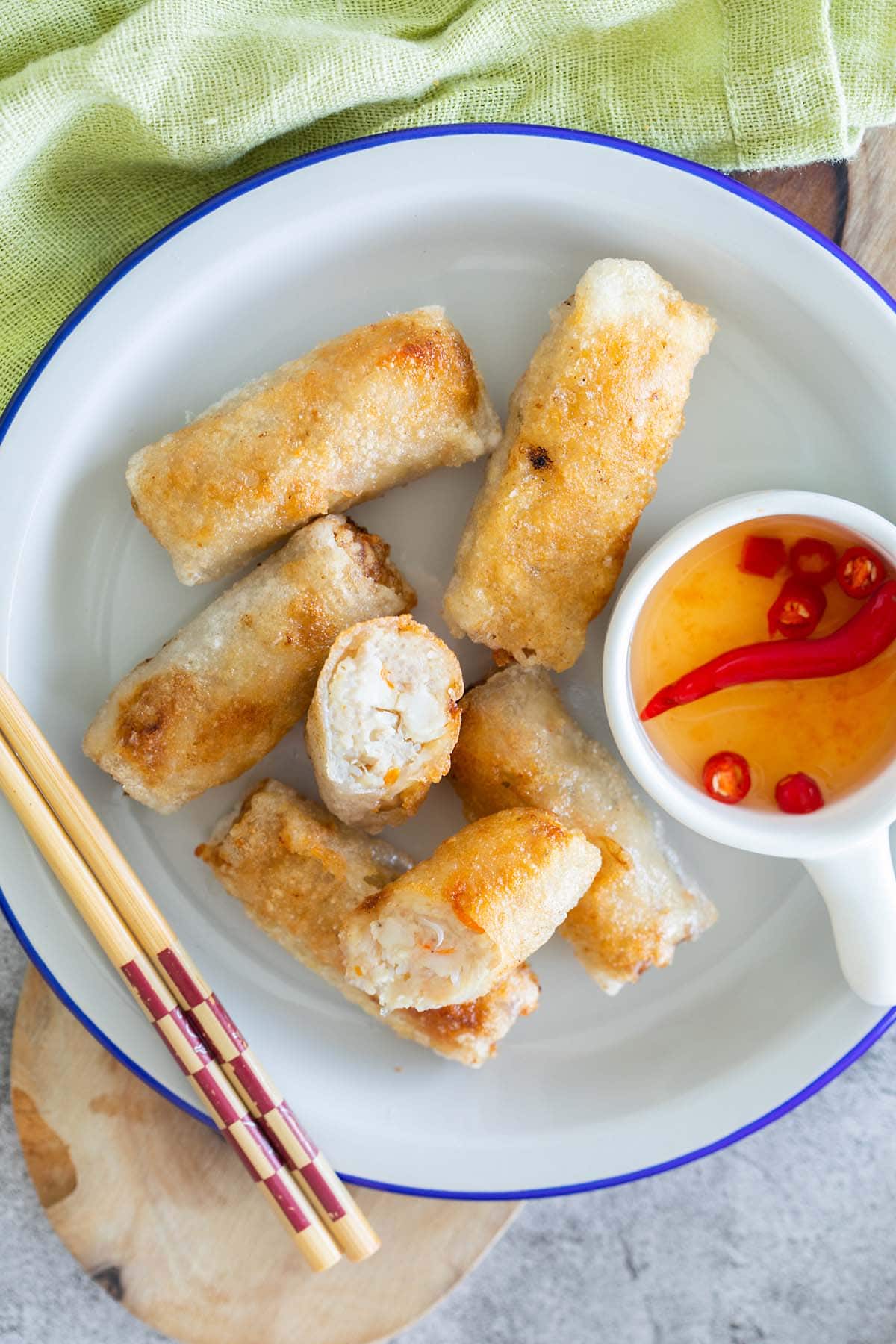
Vietnamese Spring Rolls Recipe
There are so many variations of spring rolls in Asia: Filipino lumpia, the Americanized version of egg rolls, Malaysian fried spring rolls, Vietnamese Goi Cuon. I love Vietnamese spring rolls or cha gio in Vietnamese, which roughly means “minced pork rolls.”
The filling is made of ground pork, shrimp, crab meat, shredded carrots and mung bean noodles (cellophane noodles or glass noodles).
These deep fried and crispy rolls are usually served with Vietnamese spring roll sauce called nuoc cham made with fish sauce.
You can also wrap the cha gio with fresh lettuce leaves and herbs such as mint leaves and cilantro.
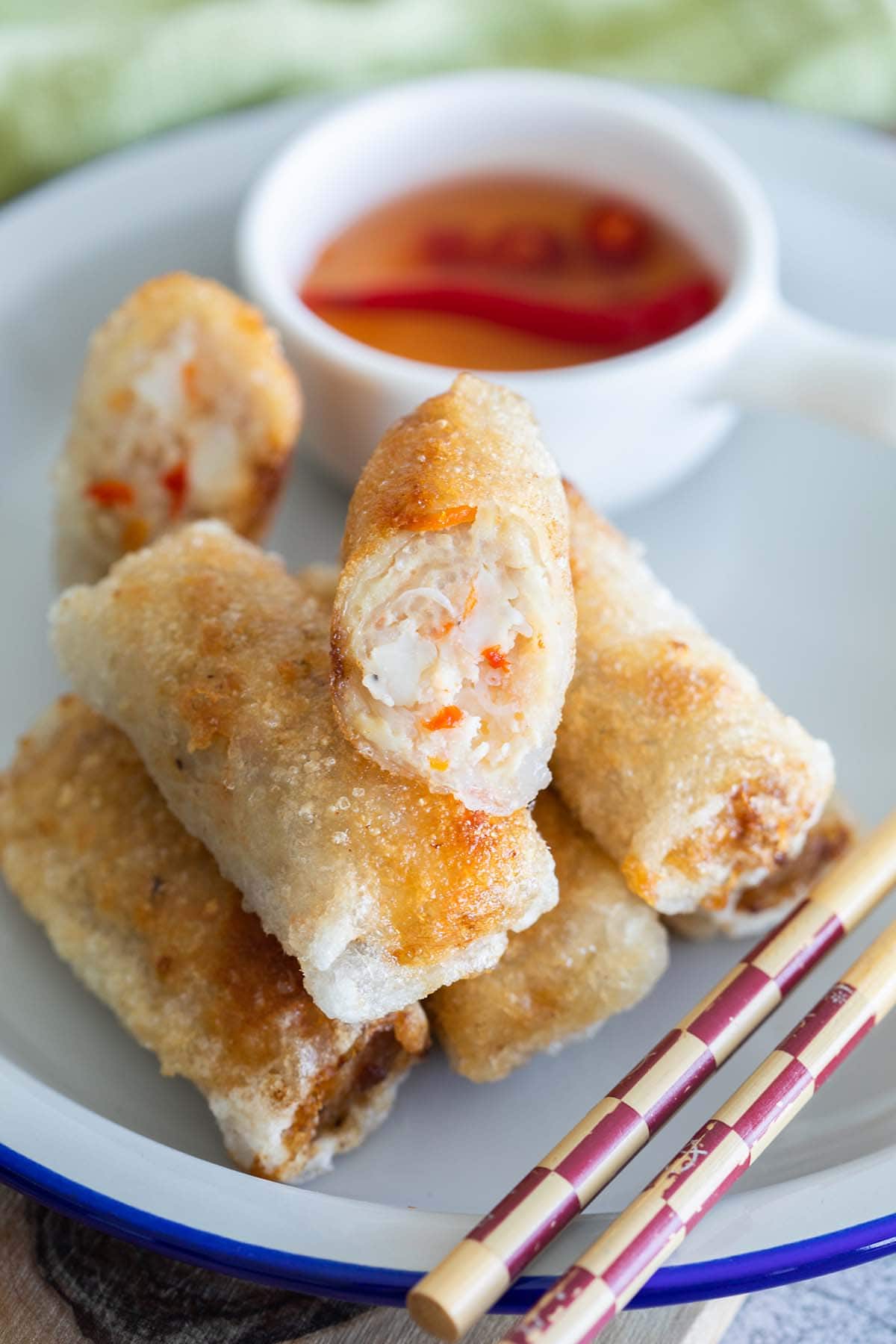
Ingredients
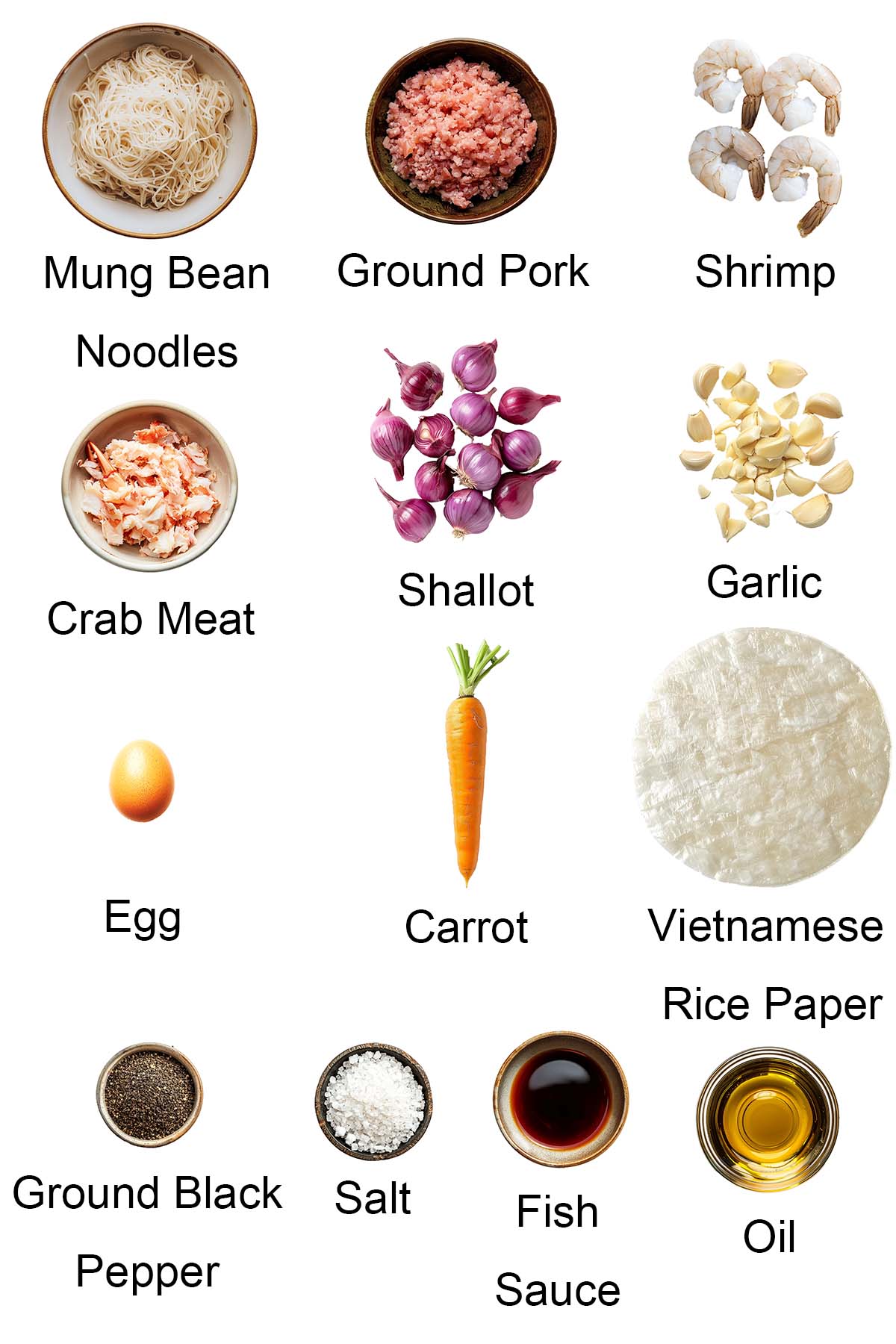
- Mung bean noodles
- Ground pork
- Shrimp
- Crab meat
- Shallot
- Garlic
- Egg
- Carrot
- Vietnamese rice paper
- Ground black pepper
- Salt
- Fish sauce
- Oil
See the recipe card for full information on ingredients.
How To Make Vietnamese Spring Rolls
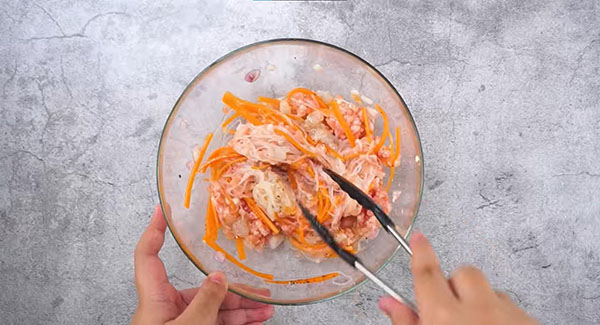
Step 1: Chop the soaked mung bean noodles into shorter threads. In a bowl, mix the ingredients together (except Vietnamese rice paper) to form a sticky filling.
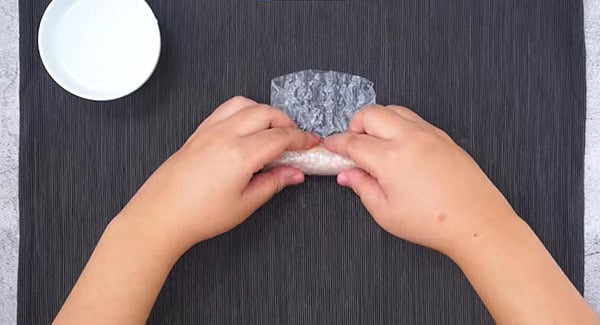
Step 2: To roll the Vietnamese spring rolls (cha gio), place a piece of the rice paper on a clean, wet kitchen towel. Dip your fingers in a bowl of warm water and run them all over the entire rice paper to soften it. Place 1 heaping tablespoon of the filling on the moist rice paper, fold the rice paper over the filling, tuck in the sides, then roll to form a cylinder about 3 inches (7cm) long.
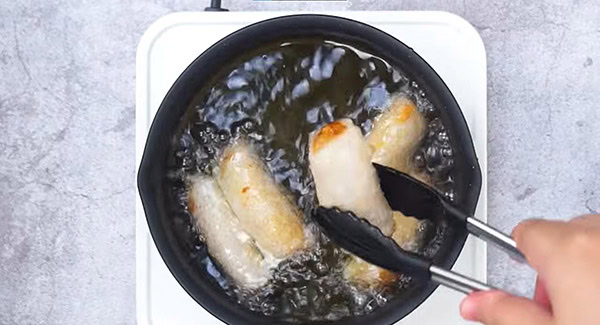
Step 3: Heat oil over medium heat in a wok or a large frying pan. When the oil is heated, gently put in a few rolls in the oil. Fry them slowly until they turn light brown. Dish out and drain the excess oil by lining them over some paper towels.
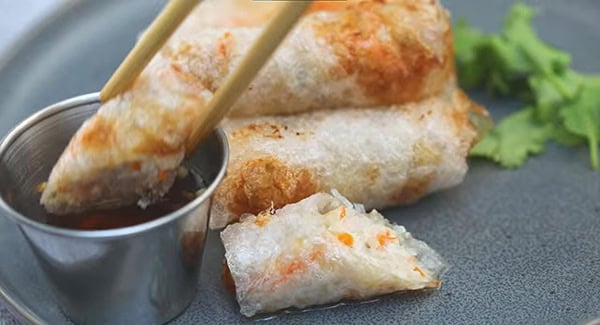
Step 4: Serve immediately with nuoc cham or roll it up with a fresh lettuce leaf and some aromatic herbs and then dip into the nuoc cham.
Frequently Asked Questions
The rice paper and the mung bean noodles are both gluten free so this recipe is gluten free.
They are mung bean noodles, cellophane noodles or glass noodles.
They are a type of transparent noodles made from mung bean starch, potato starch, sweet potato starch or tapioca starch and water.
These fried rolls are commonly served with nuoc cham or Vietnamese fish sauce dipping sauce.
Peanut sauce is not common, however you can refer to my recipe here.
Vietnamese spring roll is only 59 calories per roll.
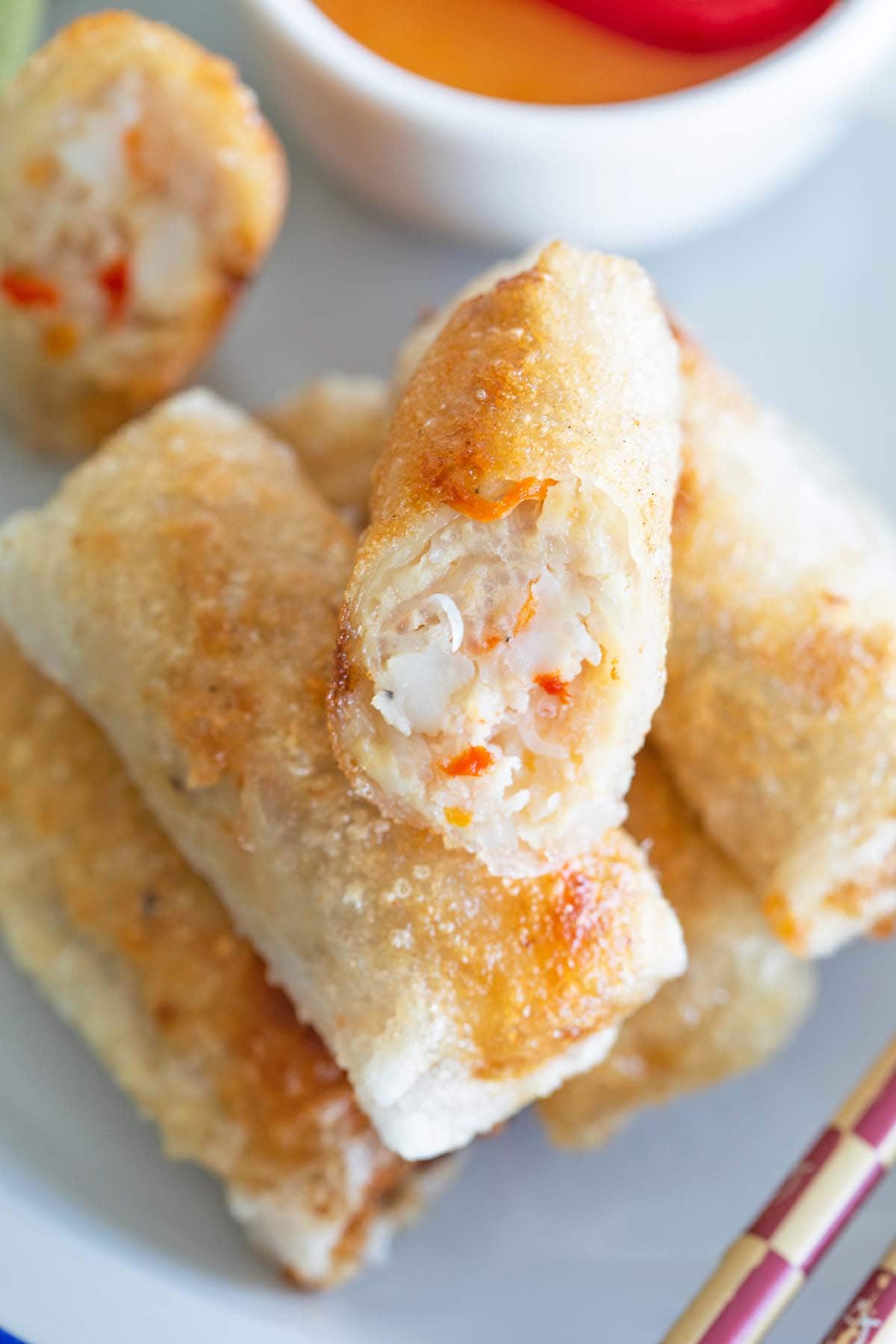
What To Serve With This Recipe
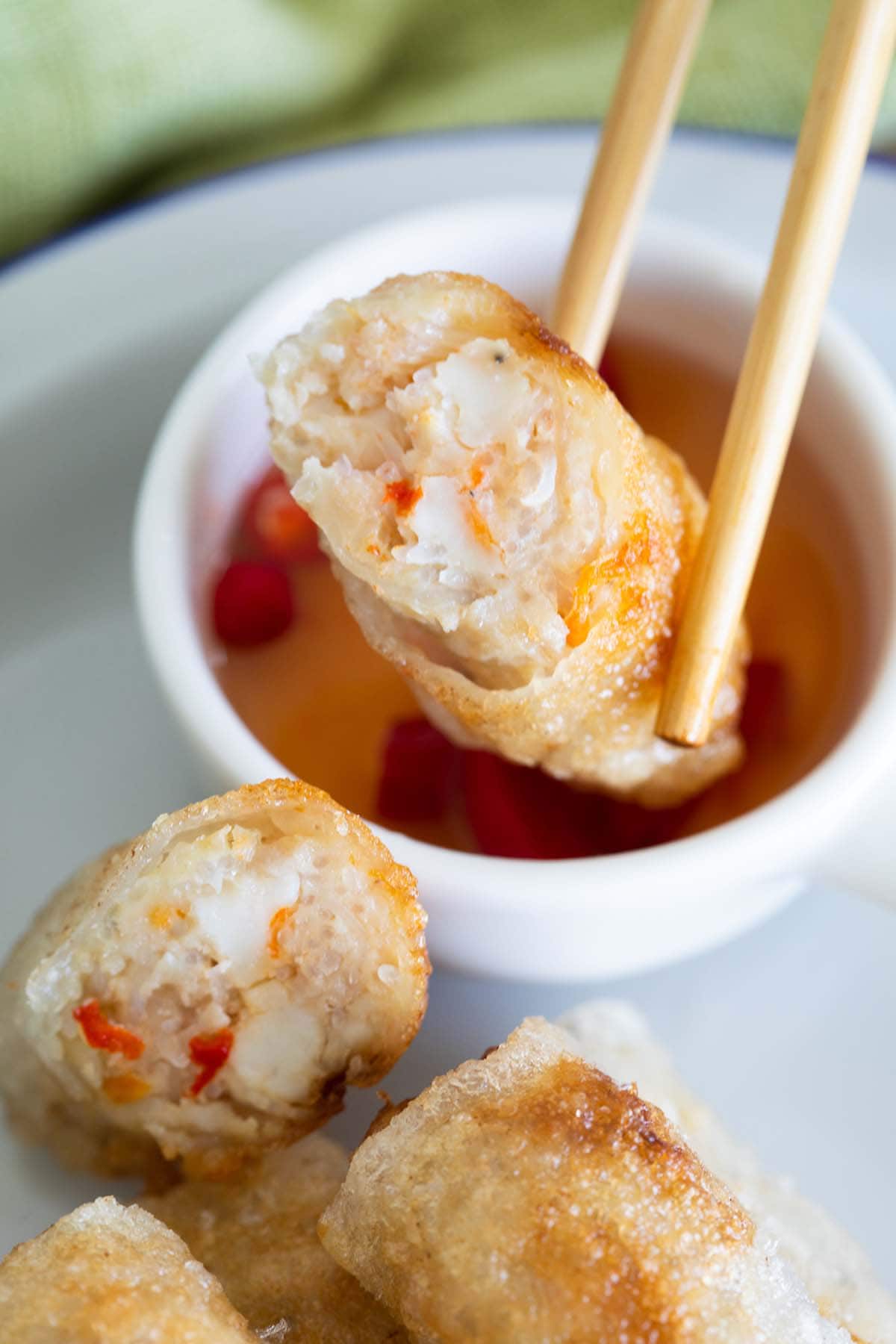
This dish is best served as an appetizer. For a wholesome Vietnamese meal and easy weeknight dinner, I recommend the following recipes.
I hope you enjoy this post as much as I do. If you try my recipe, please leave a comment and consider giving it a 5-star rating. For more easy and delicious recipes, explore my Recipe Index, and stay updated by subscribing to my newsletter and following me on Facebook, Pinterest, and Instagram for new updates.
Other Recipes You Might Like

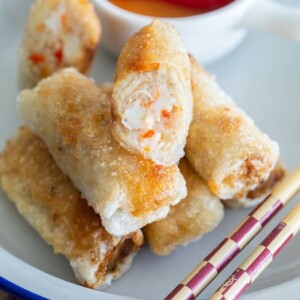
Vietnamese Spring Rolls
Ingredients
- 1 oz (30g) mung bean noodles or cellophane noodles or glass noodles, soaked in hot water for 30 minutes or until soft
- 6 oz (175g ground pork
- 2 oz. (60g) shrimp, minced
- 1 oz (30g) crab meat, coarsely chopped, optional
- some shredded carrots
- 1 clove garlic, minced
- 1 shallot, minced
- 3 dashes ground black pepper
- 1 teaspoon fish sauce
- salt to taste
- 1 small egg, lightly beaten (use only half)
- Vietnamese rice paper
- oil, for deep frying
Instructions
- Chop the soaked mung bean noodles into shorter threads. In a bowl, mix the ingredients together (excluding the Vietnamese rice paper) to create a sticky filling.
- To roll the Vietnamese spring rolls (cha gio), place a piece of rice paper on a clean, damp kitchen towel. Dip your fingers in a bowl of warm water and run them over the entire rice paper to soften it. Place 1 heaping tablespoon of the filling onto the moist rice paper, fold the rice paper over the filling, tuck in the sides, and then roll to form a cylinder about 3 inches (7 cm) long.
- Heat oil over medium heat in a wok or large frying pan. Once the oil is hot, gently add a few rolls to the oil. Fry them slowly until they turn light brown. Remove from the oil and drain the excess by placing them on paper towels.
- Serve immediately with nuoc cham, or wrap the spring rolls in a fresh lettuce leaf with some aromatic herbs and dip them into the nuoc cham.
Video
Notes
- Use the 8 1/2-inch round rice paper.
- Do not deep fry the cha gio on high heat because they splatter and most importantly, high heat causes the skin to bubble, break and burn.
- So patience is key, use medium to low heat during frying process.
- Cha Gio is also called Imperial Rolls in the United States, not to be confused with Summer Rolls.
Nutrition
Nutrition information is automatically calculated, so should only be used as an approximation.
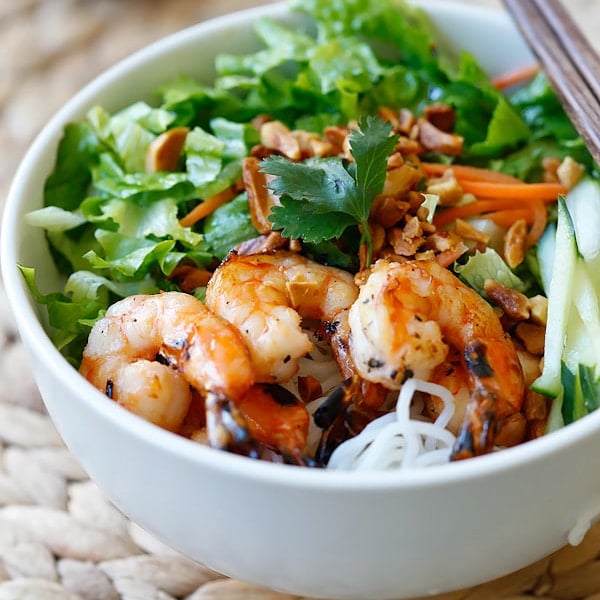
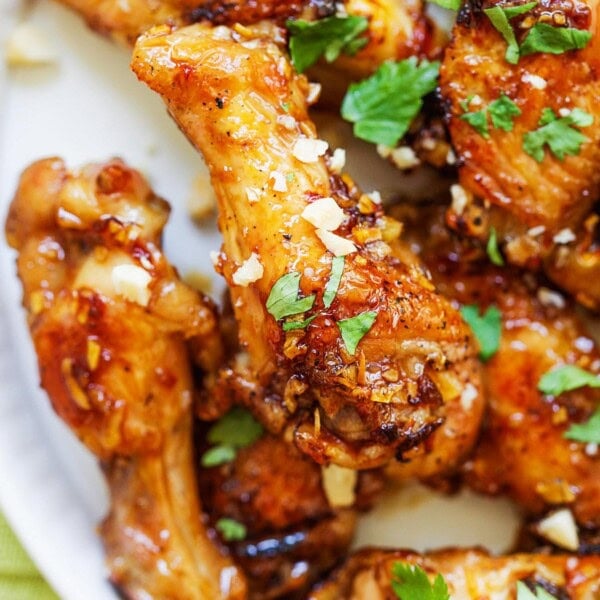
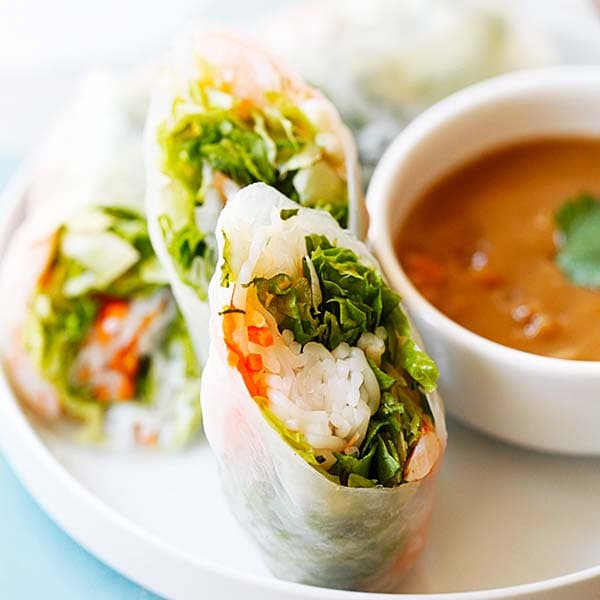






I made these today. Simple and easy to make and taste great. This recipe is definitely a keeper.
Thank you. :)
I must try making them your way. I usually just improvise with fresh veggies, ground pork, ginger, scallions, pepper, and soy sauce. I like the rice wrappers and the flour wrappers. I don’t loathe the American style. However it must be telling that my improvised spring rolls are so much tastier than egg rolls in Chinese restaurants. I’m pretty lucky to live within walking distance of a Vietnamese market. Having easy/affordable access to good ingredients helps so much.
Thanks so much for posting your recipe :)
thanks!:))
Hello.
Stupid question, but the pork and shrimp is raw before frying, correct? It does not say anything about cooking before so I wanted to make sure.
Yes, after you deep-fry, it would be cooked.
Firstly I must tell you how much I love your recipes and enjoy getting your e.mails. My question is although I have made veitmanese fried succesfully many times, someone asked me can the spring rolls be steamed as they are not keen on the summer rolls raw. As she has no I.pad I said I would ask you for her. Is this possible as it would open the door to using the crisp rice wrapper for a lot of different things for people who cannot eat fried food. Thanking you in anticipation
Hi Jude, thanks so much for your comment. Yes, I think it’s perfectly fine to steam but it’s not going to be cha chio. But I can see that it might work for many people who are health conscious.
I was always greedy of spring rolls which I often eat in vietnamese restaurants here in Italy. Now with your instructions I can make them at home without major problems and also the ingredients seem readily available in local markets. I will try them this weekend!
Many thanks ;-)
Marianna
Two people have asked, but were never answered: How many rolls does this recipe make? I would like to make these for a party, but I need to make enough for a certain number of guests. All of your other recipes show a yield, but not this one.
Thanks!
It serves 4 people as appetizer.
I have a friend that is half Chinese and half Vietnamese, and his mother makes the BEST Vietnamese Egg Rolls.. She calls them (what sounds like in English) chai ‘ya.. Is this the same thing as the recipe here?? Thanks in advance for any info on this…!
M
PS Love your recipes.. Keep up the good work!!
Hmm I am not sure.
Hi Mike!
I’m Vietnamese and yes that is the same thing as the recipe here. It’s spelled cha gio, pronounced kind of like chai yaw.
Hi, can you please tell me how many springrolls this recipe is?
I have to make about fifty for saturday!!
Thank you for the recipe. I’m gonna try this one. We’ll be serving it in my restaurant. Thank you again. I love your recipes.. Keep it up.